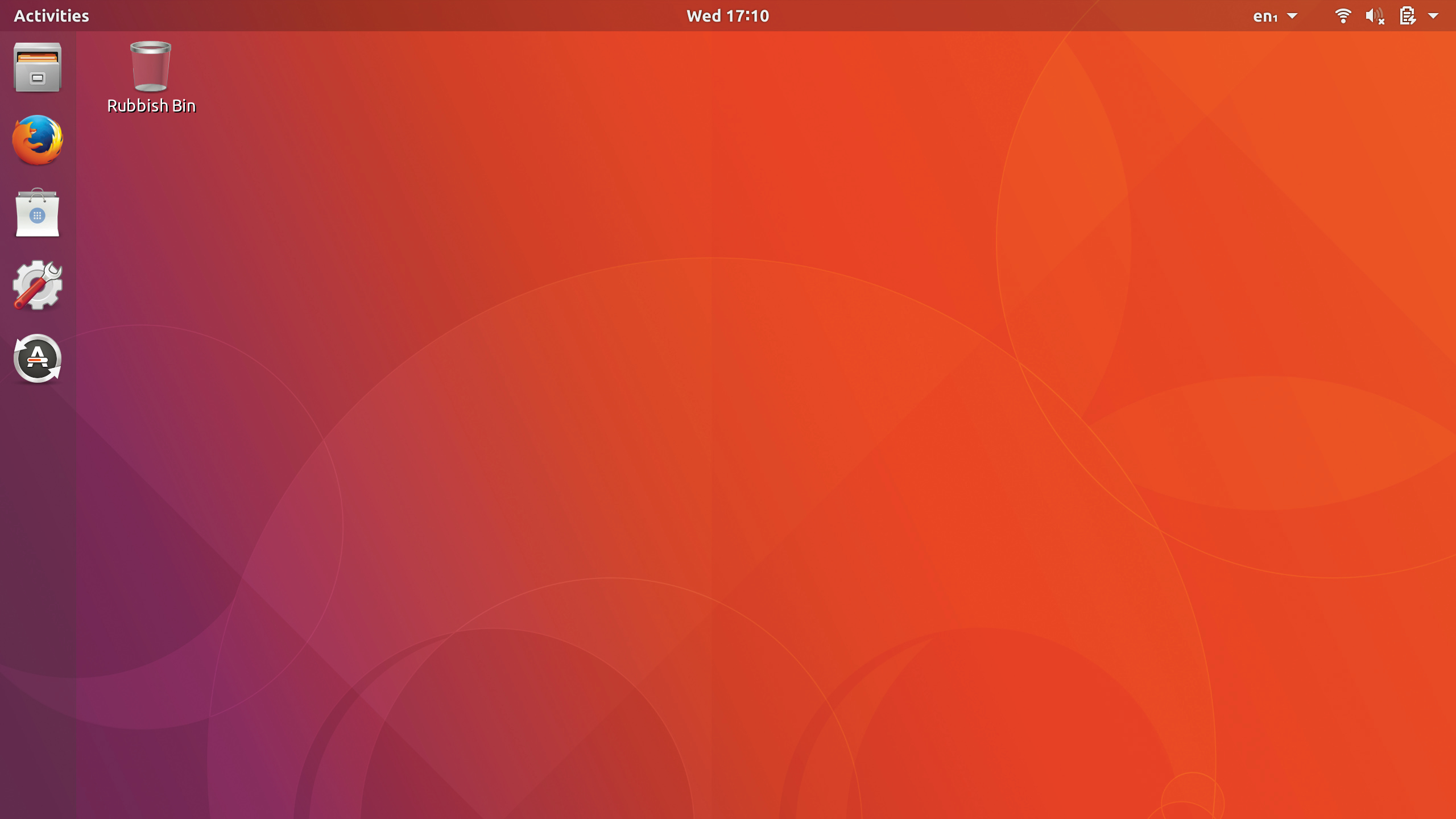Ubuntu in transition: what’s in store for the popular Linux distro?
We interviewed the desktop manager at Canonical as version 17.10 was released
Q: Have there been many challenges moving to Wayland from Mir?
WC: Not challenges necessarily. There’s still work to do to get it stable and we’re contributing to that upstream as well. One of the main Wayland developers is out in Taiwan and we went out to meet with him for a week and work on HiDPi fixes and fractional scaling in the shells so you can scale it up by 0.5%, rather than 1% each time.
That gives much more of an ability to work better on various display sizes that support HiDPi, whereas before they were on or off. Now it’s much more fluid and so we started that relationship with Wayland developers and that’s gone really well [...]. We’ve got patches contributed upstream and they’ve helped us to fix a few bugs.
We found a bug yesterday which affected AMD Radeon users. We found out about it at 2 o’clock in the afternoon, the day before release and they had to fix really quickly [...]. There’s still work to do to make it better and we’ll do that this cycle.
Q: Is there a transition in terms of software compatibility?
WC: Most of the applications we’re using are all using Gnome GTK toolkit and, of course, that has supported Wayland for a long time. That solves a lot of the problems and for everything else there’s the Xorg. The Xorg stack is still compatible with the majority of applications that are out there. There are a few that don’t work perfectly; a few we’ve had to patch, but on the whole everything is compatible for our core applications, at least.
Q: There’s a belief that moving to the Gnome Shell makes the Ubuntu desktop OS project more manageable. Is that your experience? How big is the desktop team now at Canonical?
Sign up to the TechRadar Pro newsletter to get all the top news, opinion, features and guidance your business needs to succeed!
WC: Yes, ultimately there’s a much bigger community around Gnome Shell than there ever was around Unity. More people to help on that project overall is a good thing, so I think it’s fine and will be fine. For pure desktop we’ve got 17 people. Still a very sizeable team and we’re mostly Gnome developers now. There are still some Qt and KDE people on staff, but on the desktop we are now primarily a Gnome-focused team and we have been for a long time. We’ve got that depth of knowledge of the entire Gnome stack, which is making things a lot easier.
Q: Leading on from that, what Gnome technologies are you excited about and keen to collaborate on?
WC: Wayland is definitely the future and I think by us testing it front and centre, publicly standing by Wayland and wanting to move it forward. I hope we’ll get that critical mass of adoption which means the development moves forward that much quicker because we’ve got millions and millions of people testing it now on their everyday machines.
Wayland will be the key thing we’ll be contributing to and there’s general usability, tool improvement and stability fixes. Gnome’s pretty stable, but we spot a lot of bugs hidden away in dark corners, so I think just improving the Gnome toolkit and the speed and reliability of it is what I’m excited about this cycle; as it’s an lTS [referring to 18.04], you want everything to be absolutely rock solid.
Q: It’s always nice to talk about the next release, but how many of the missing default experiences (e.g. lenses and scopes, HUD, global menu, Alt+Tab behaviour) do you think you will want to include for 18.04 LTS, or is it more a question of users diving into Gnome extensions from now on?
WC: We still want to maintain being easily identifiable as Ubuntu. We have a particular style and set of ideas about how we think things should work and our users tell us the way they want to work. I don’t think there will be much friction there. I think the way that we’re setting up the desktop to allow people to install default Gnome or Ubuntu’s version means that everybody can get on board and use it relatively easily.
I don’t think we’re going to go to a default Gnome experience any time soon. We’ve set the bar now: this is what to expect; we will have a launcher, you will have other bits to tweak, but ultimately the Gnome design is going to shine through our changes. We’re not going to try to hide it all away. We want people to get the best of both.

Q: What’s your hot tip when it comes to Gnome extensions? Have you got a favourite?
WC: Well, Dash to Dock is the one that I find the most useful. Having that launcher there and having that quick access to all the applications is the thing that makes my workflow so much smoother. I don’t know whether that’s because I’ve been using Unity for so long and I’m stuck in my ways or if it’s an easier way to get at the things I need to get at. I think it’s probably a bit of both, to be fair.
Q: With Ubuntu flipping back to GTK+, what’s Ubuntu’s position on Qt now?
WC: We’re still fully supportive of the Qt project. We have a good relationship with the KDE guys. They have just announced that their preferred packaging will be snap and they have a whole load of snap builds [...]. I think we’re still a member of the advisory board and we see a lot of Qt in the IoT area, it’s a bit more standard than Gnome in ioT – things like in-car entertainment and those kind of things. It’s still definitely the predominant technology.
Q: How do you see the Ubuntu desktop OS changing over the next five years?
WC: We’re not going to see a sudden flurry of people adopting Ubuntu or Linux on their desktop. What’s interesting is the speed in which services are moving entirely online via a web browser and the way that things are going, the concept of making applications is becoming less and less important and everything you can do, you can do through a web browser. At which point why do you need to run Windows, for example, if you’re literally using it to run a browser?
At that point, Ubuntu and Linux general becomes a much more attractive and viable operating system of choice for the vast majority of people, I think. If what they are doing is sitting down on an evening and getting a laptop out and going on the web and learning stuff [...] and chatting with people [...] then why pay money for an operating system when you could get one for free, but also have something that is more secure and reliable?
Q: Given the focus on profitability at Canonical, does it concern you that the desktop OS doesn’t make any cash for the firm? Or is that a misconception?
WC: Sure, so we see Dell shipping laptops pre-installed and we see other OEMS shipping Ubuntu preinstalled on their machines. The work that we do on the desktop is sometimes directly applicable to the server and the more people that are running server in their cloud, the more chance they are going to want to run it on their laptop because they can test whatever it is they are going to deploy to the cloud. They can test with the exact same software, on their laptop on the train, for example, before they get to work as they would do in the cloud.
So Ubuntu desktop is popular, particularly with the likes of Dell. It generates revenue and using the same platform for your day-to-day development and testing as you do in your deployed environment is a very compelling story to developers.
Q: What are you particularly proud of in this release?
WC: It’s a bit low-level, but what we’re proud of is the fact that all the customisations that we’ve done on the desktop do not impair the ability to run a vanilla Gnome desktop session on there. We haven’t said it’s the Ubuntu desktop or nothing [...]. None of our settings and extensions and that kind of thing affects that session at all. If you want a very pure upstream experience, we’ve made that very easy to get.
I think that’s good for us to show that we’re not trying to block Gnome’s design decisions out of Ubuntu at all. They are there. We have a slightly different view, but the two can co-exist perfectly. I think that’s a good metaphor for our relationship.
Current page: Wayland and the future
Prev Page Introduction and unleashing v17.10 Next Page Firing up the communityChris Thornett is the Technology Content Manager at onebite, editor, writer and freelance tech journalist covering Linux and open source. Former editor of Linux User and Developer magazine.
